Yeast vs Sourdough Starter - What's The Difference?
This post may contain affiliate links.
What's the difference between yeast and sourdough starter? Commercial yeast and sourdough starter are essentially both yeast. However, while they are both yeast, they behave in very different ways - including timing, reliability, leavening power and flavor.
Sourdough starter and yeast are both leavening agents and both require a fermentation process. They are used to leaven breads, pizza, rolls, bagels etc. Other leavening agents can include baking soda, baking powder, eggs etc. These are more popular for quick breads like banana bread or pancakes.
So is there really a difference between commercial yeast and sourdough starter - they both make dough rise? So can they be used interchangeably without any issues?
You can easily learn how to convert yeast recipes into sourdough recipes here.
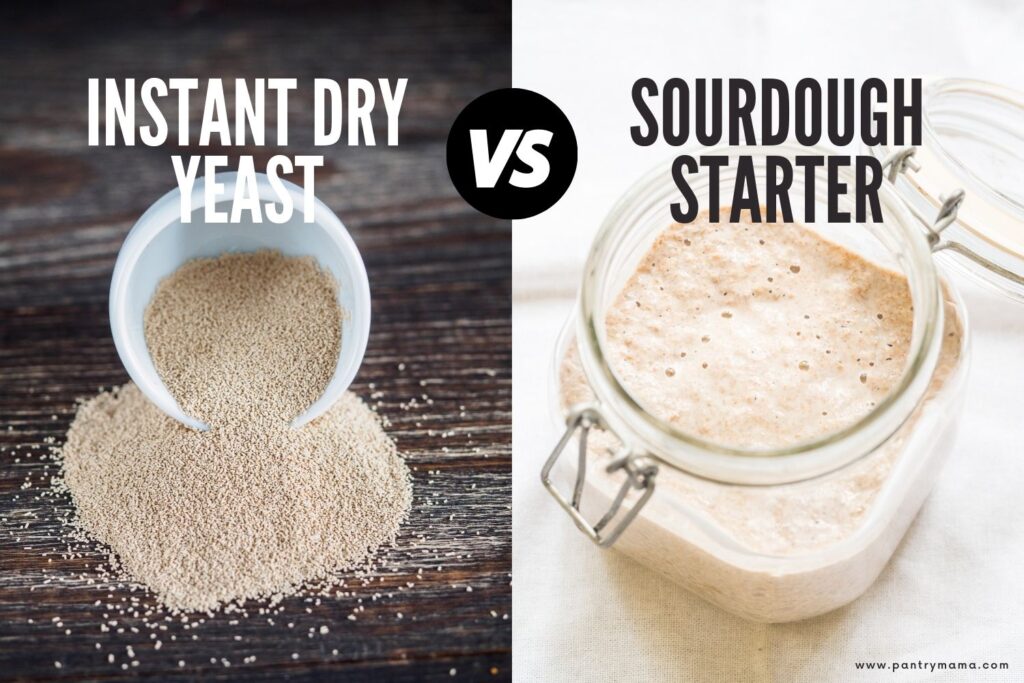
What is Yeast?
Yeast, or commercial yeast as it is often referred to, is a specific strain of baker's yeast. It is different to nutritional yeast. Commercial yeast or cultured yeast refers to a fermentation agent that belongs to the saccharomyces cereviae family (this is very closely related to mushrooms believe it or not).
Commercial yeast is manufactured under specific conditions and is honed to make it rise bread quickly and easily. It has been chosen from 1500 species of yeast and manipulated to give a reliable result (nearly) every time.
Yeast feeds on sugars that convert this food source into carbon dioxide. You can even make alcohol with yeast if you give it enough time!
There are three main types of commercial yeast - these are instant, active dry and fresh yeast.
Instant Yeast
This type of yeast is often called rapid rise and is probably the most common type of yeast used by home bakers. It is quite fine and smaller granules mean that it can be put directly into your dough - you don't need to allow it to bloom first.
I use this type of yeast in my popular Easy Sourdough Discard Sandwich Loaf because it doesn't need to be activated first and can be thrown directly into the dough with no issues.
Active Dry Yeast
This type of yeast is a little grainier than instant yeast and requires to be activated in water or milk before it is used in a recipe.
It is better suited to longer fermentation processes and is good for recipes needing a double rise (like regular bread). It is good for use in bread machines as it can handle longer periods of proofing that may not be tolerated by instant yeast.
Fresh Yeast
Also known as cake yeast, fresh yeast is sold in blocks that need to be kept in the fridge. It is not dehydrated like the two other types of yeast above. Fresh yeast is better suited to sweet breads and donuts, although it can be used for any type of bread, pizza or roll that requires yeast.
It is often favored by commercial baker's but is not as convenient for the home baker.
You can see photos of the 3 different types of commercial yeast below.
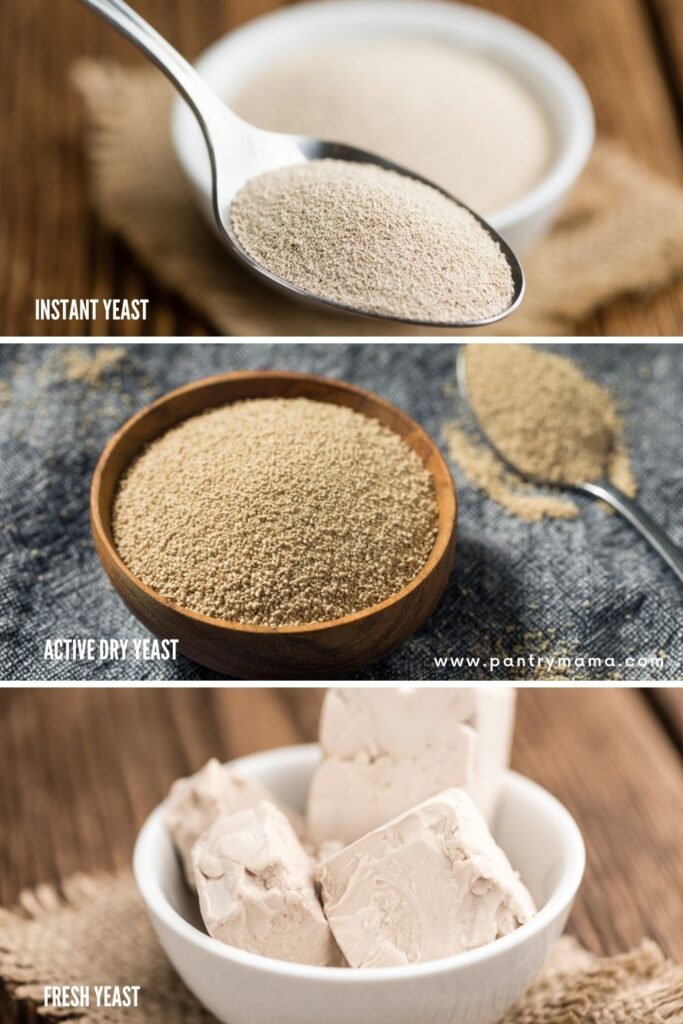
What is Sourdough Starter?
Sourdough starter looks more like a batter than a type of yeast. Where commercial yeast is generally in granulated form, sourdough starter is most commonly a liquid or batter (although it can be dehydrated and suspended).
It is characterised by mousse like bubbles that are often pressed against the glass jar it is kept in. You will notice many bakers use a rubber band to keep track of the activity of their sourdough culture.
Sourdough starter is essentially a "symbiotic colony of yeast and bacteria" or SCOBY. It is a living organism containing wild yeast that occurs in the air, in the flour you use and even on your hands! You can read all about where the yeast in sourdough starter comes from here.
Unlike baker's yeast, sourdough starter is naturally occurring and is a lot more volatile and unpredictable than its commercially produced counterpart.
And one of the main differences to commercial yeast, is that the yeast in your sourdough starter live in a symbiotic relationship with the lactic acid bacteria. The yeast continue to thrive in this acidic environment and as long as you get the timing right, they will make your dough rise.
While you can most definitely learn the rhythm of your sourdough starter, you may find that sometimes, it really does just do it's own thing!
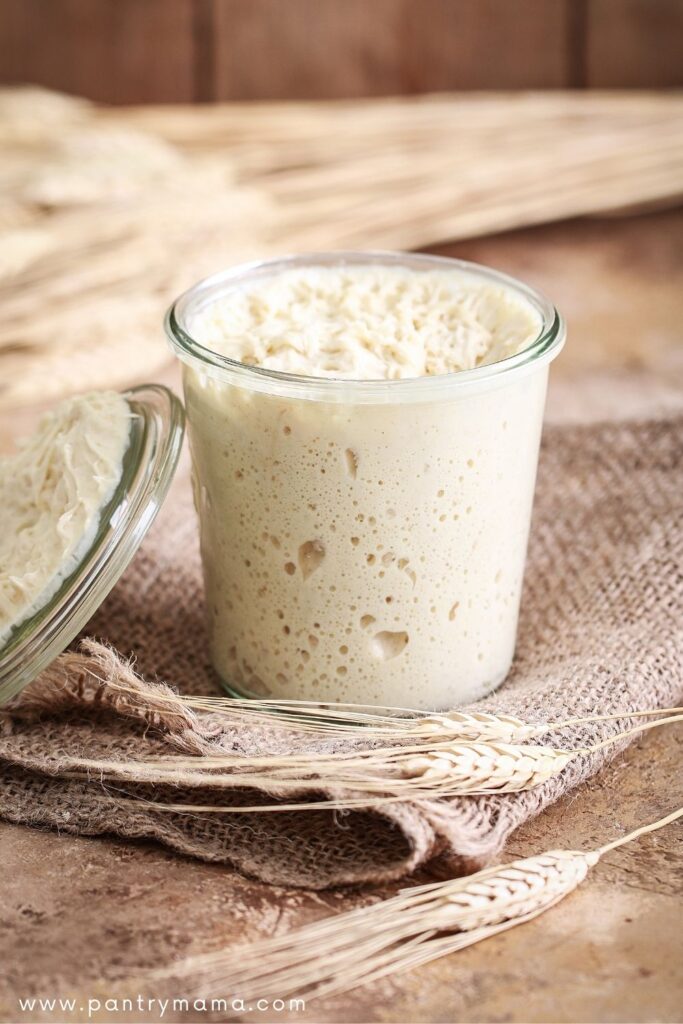
How Is Yeast Different to Sourdough Starter?
The truth is, sourdough starter is full of yeast - it's just a different kind of yeast to commercial yeast. So while sourdough starter is different to commercial yeast, it can get confusing because in essence, sourdough starter is natural, wild yeast.
The main differences between yeast and sourdough starter are the time in which they take to leaven bread.
Because of the way commercial yeast has been honed, it rises bread very quickly. In comparison, the wild yeast contained in sourdough starter can take many hours, even days, to rise bread.
But in this difference of timing, comes a difference of flavor. The time that the wild yeast in your sourdough starter take to rise your dough contribute to the complex flavor profile of sourdough bread.
The cold fermentation often used for sourdough bread encourages a build up of acetic acid, which increases the sourness of the sourdough bread.
What is the Difference Between Natural Yeast and Sourdough Starter?
There really is no difference between natural yeast and sourdough starter - they are one and the same. Sourdough starter is made of naturally occurring yeast and lactic acid bacteria. The naturally occurring wild yeast is what leavens sourdough bread.
Whether you maintain your sourdough starter on the counter at room temperature or in the fridge, it is still natural yeast. The flavor of the wild yeast may vary depending on how you store it and how you feed it (ie whether you use whole wheat flour or bread flour), as well as what temperature you keep it at. You'll find tips for making your homemade sourdough bread more sour or less sour here.
But regardless of all these factors, sourdough starter is natural yeast. A healthy starter will make your bread rise.
How Do You Make A Sourdough Starter
Sourdough starter is pretty easy to make and is a combination of simple ingredients. You basically need to combine equal amounts of flour and water over a period of several weeks until you establish a strong colony of wild yeast and lactic acid bacteria. You can find my easy instructions for making a sourdough starter here and sourdough bread recipe here.
Sounds simple, right? Well it is in theory, but there are many things that can go wrong. You're dealing with wild yeast after all! You can find a comprehensive sourdough troubleshooting guide here.
You could choose to feed your sourdough starter with rye flour, whole wheat flour, all purpose flour or even bread flour.
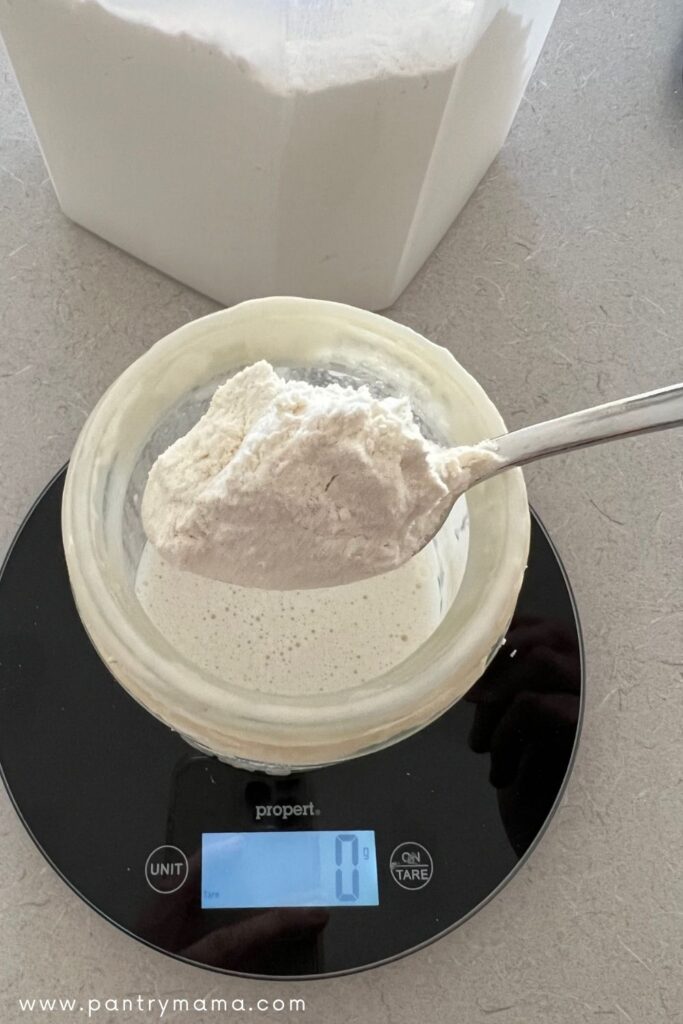
Is It Better To Use Yeast or Sourdough Starter?
There really is no definitive answer to this question. Whether you use yeast or sourdough starter really depends on what you are making and what resources you have available to you.
There are pros and cons to using baker's yeast and sourdough starter. For example, commercial yeast may be very fast to rise, which is great when you're pressed for time. But bread made with sourdough starter tastes so much better as it has a more complex flavor! So then it becomes a question of what is more important to you - taste or time?
I really don't want to convince you that one is better than the other. While I'm a huge advocate for baking sourdough - I also use commercial yeast regularly in my kitchen. I believe there's a time and place for both.
And in fact, in these uncertain times, it can be great to have both in your kitchen! A small sachet of dried sourdough starter can be a useful addition to any emergency kit. However, commercial baker's yeast can be purchased from grocery stores.
Pros vs Cons
Have you ever considered the pros and cons of using sourdough starter or commercial yeast? The pros and cons really depend on your individual circumstances.
Pros & Cons of Commercial Yeast
| PROS | CONS |
|---|---|
| Convenience | Is manufactured and processed. |
| Requires little time for bread to rise | Lacks depth of flavor and taste (unless you make enriched dough) |
| Same day baking is possible | Doesn't have same health benefits as bread made with sourdough starter |
| Generally easy to find at grocery store | May be in short supply during global unrest |
Pros & Cons of Sourdough Starter
| PROS | CONS |
|---|---|
| Has many health benefits and is better for gut health and gluten sensitive people | Requires constant feeding to keep it alive. |
| Renewable resource - can be made with flour and water when commercial yeast unavailable. | Requires many hours, even days, for bread to rise and proof. Same day baking is generally not possible. |
| Can bring a sense of pride when you bake bread with your own naturally occurring yeast. | Can take time to create a sourdough starter if you don't have one ready made. |
| Makes a lovely gift. | |
| Can be dried and preserved for uncertain times or shared among friends and neighbors. |
Why Bother Using Sourdough Starter?
So after reading about the inconvenience of sourdough starter, why would you even bother using it?
You really can't beat the depth of flavor or the crackling, blistered crust of freshly baked sourdough bread. And have I mentioned the sense of pride you get when you lift the lid on that Dutch Oven?
There are also several health benefits to eating sourdough bread. Sourdough that has had a longer cold ferment has a reduced amount of gluten which may be better for people that have gluten intolerances.
And just look at the gorgeous open crumb that can be achieved with a healthy starter!
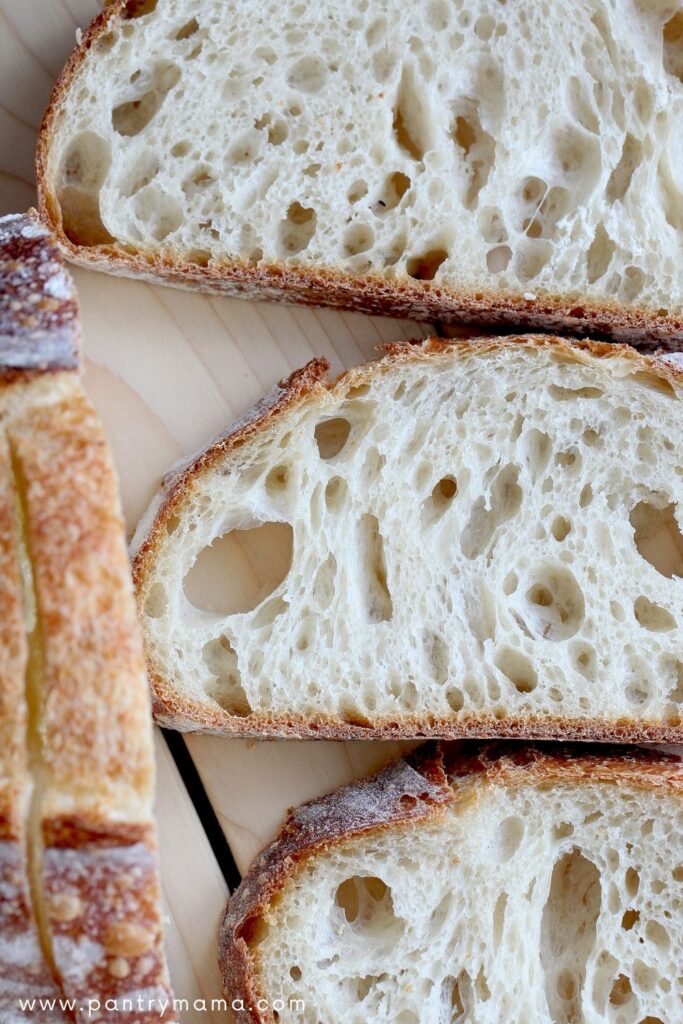
Can You Convert a Yeasted Recipe To Sourdough Starter?
So the big question, can you convert yeasted bread recipes to sourdough starter?
The short answer is yes, most of the time, you can convert a yeasted recipe to a sourdough recipe. While yeast and sourdough starter are not always interchangeable, there are ways to convert your favorite yeast breads. You could even explore using a poolish in your favorite yeasted recipes.
The things you need to look at when converting a yeasted recipe to a sourdough recipe are:
- Amount of yeast used?
- Amount of flour?
- How much water is in the recipe?
- Timing of the recipe
Sourdough starter is made up of equal parts flour and water (unless you keep your starter at a different hydration). So when you add sourdough starter to a recipe, you would then need to deduct the same amount of flour and water. But here's where it gets a little tricky.
While sourdough starter is half water, it acts more like a liquid than a solid, so you will need to take that into account as well.
You can find a full guide on how to convert a yeasted recipe to a sourdough recipe here.
How Much Sourdough Starter To Use In A Yeasted Recipe?
If you do want to use sourdough starter in a yeasted bread recipe, you will generally need to use a formula to convert it.
Here are the steps to convert a yeasted recipe to using sourdough starter for leavening:
- Decide how much sourdough starter you want to use based on the amount of flour in the recipe. For example if you want to use 20% starter, you would use the total amount of flour as 100%. So if you had 500g of flour, 20% of starter would be 100g.
- Once you know how much starter you're going to use, you then deduct half of this amount of flour and half of water - so in this case you'd deduct 50g of flour and 50g of water.
- Once you mix the dough, you can decide whether the dough is too wet or too stiff and adjust accordingly.
- Remember that the amount of starter will make a difference to the bulk fermentation and proofing time, as well as to the leavening power.
Can You Use Sourdough Starter and Yeast?
Absolutely! You can use sourdough starter and yeast together in a recipe. In fact, most sourdough discard recipes utilise commercial yeast as their leavening agent and use sourdough starter for the flavor component.
Some examples of recipes that utilise baker's yeast alongside sourdough starter are:
- Easy Sourdough Discard Sandwich Loaf
- Sourdough Discard Bagels
- Sourdough Pane Di Casa Bread
- Sourdough Discard Rolls
- Whole Wheat Sourdough Discard Sandwich Loaf
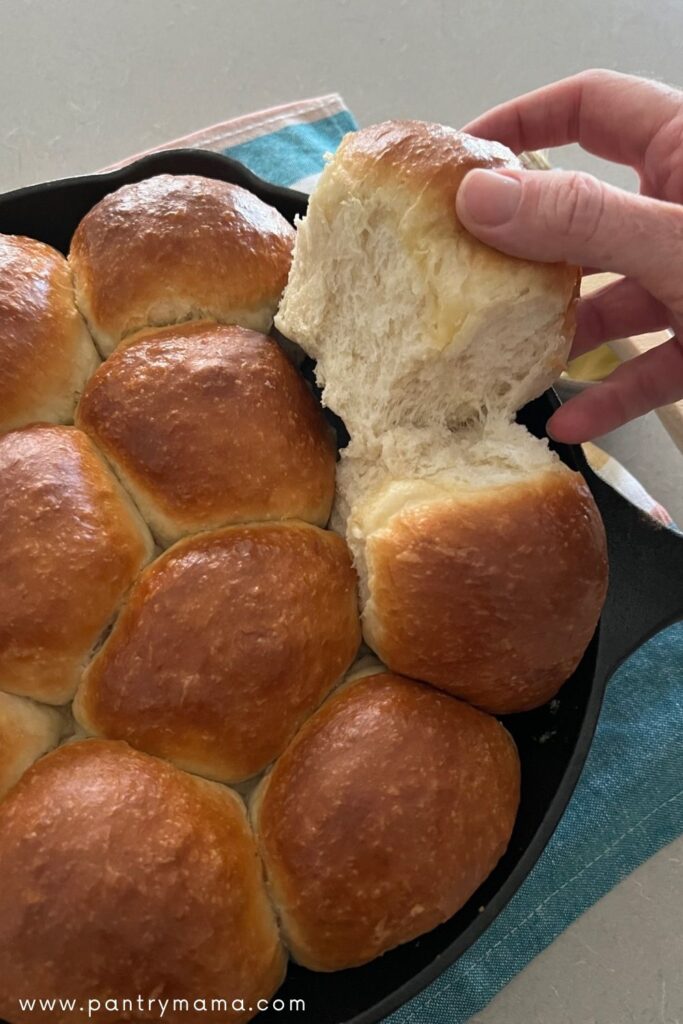
Frequently Asked Questions
Sourdough starter isn't necessarily better than yeast, although many would argue that it produces a healthier, tastier loaf. It really depends on how much time you have, how much knowledge you have and what you are making. Sourdough starter may be better than yeast for some recipes due to timing and ingredients, but this often comes down to personal preference.
Yes you can use sourdough starter instead of fresh yeast, however you would then need to reduce the amount of flour and water used in the bread recipe to account for the flour and water contained in the sourdough starter.
No - if you make bread without a starter, you'd be using some kind of commercial yeast for the leavening. This means that is would be regular bread or yeasted bread, as opposed to sourdough bread. Even if you use Greek yoghurt or sour cream in the recipe to give it a "sour" flavor or tang, it still won't be sourdough. Sourdough refers to the making of bread with a sourdough starter.
If you add commercial yeast to your sourdough starter, you have then added a specific strain of yeast to your starter. This specific strain of baker's yeast will more than likely colonise faster than the wild yeast you are trying establish. Over time, wild yeast will take up residence, but due to the presence of the commercial yeast strain, it will not be a true sourdough starter. You can read more about what happens when you add yeast to sourdough starter here.
There are many ways to strengthen a weak sourdough starter. Essentially you need to boost the yeast colonies inside your jar and make them produce carbon dioxide more quickly - this is what rises your bread. You'll find 5 tips for strengthening a weak sourdough starter here.
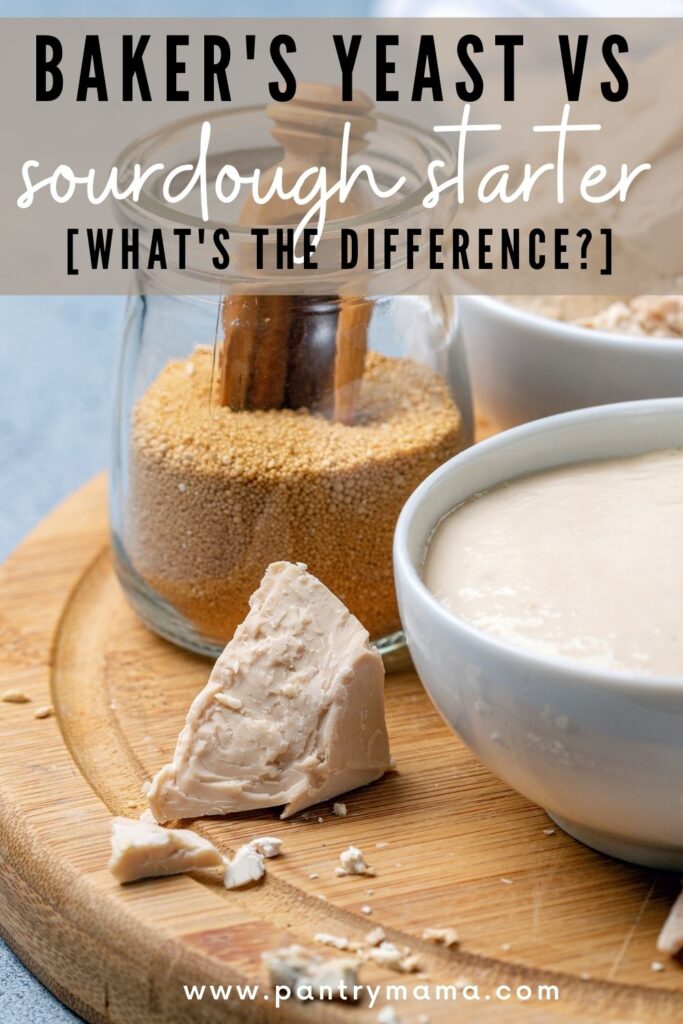
Further Reading
If you have enjoyed learning about the differences between commercial yeast and sourdough starter, you might also enjoy these articles:
- Difference between a levain and a sourdough starter
- Difference between a levain and poolish
- Bulk fermentation vs cold fermentation
- Where does the yeast in a sourdough starter come from?


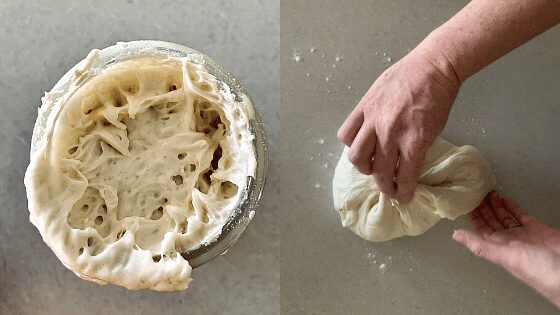
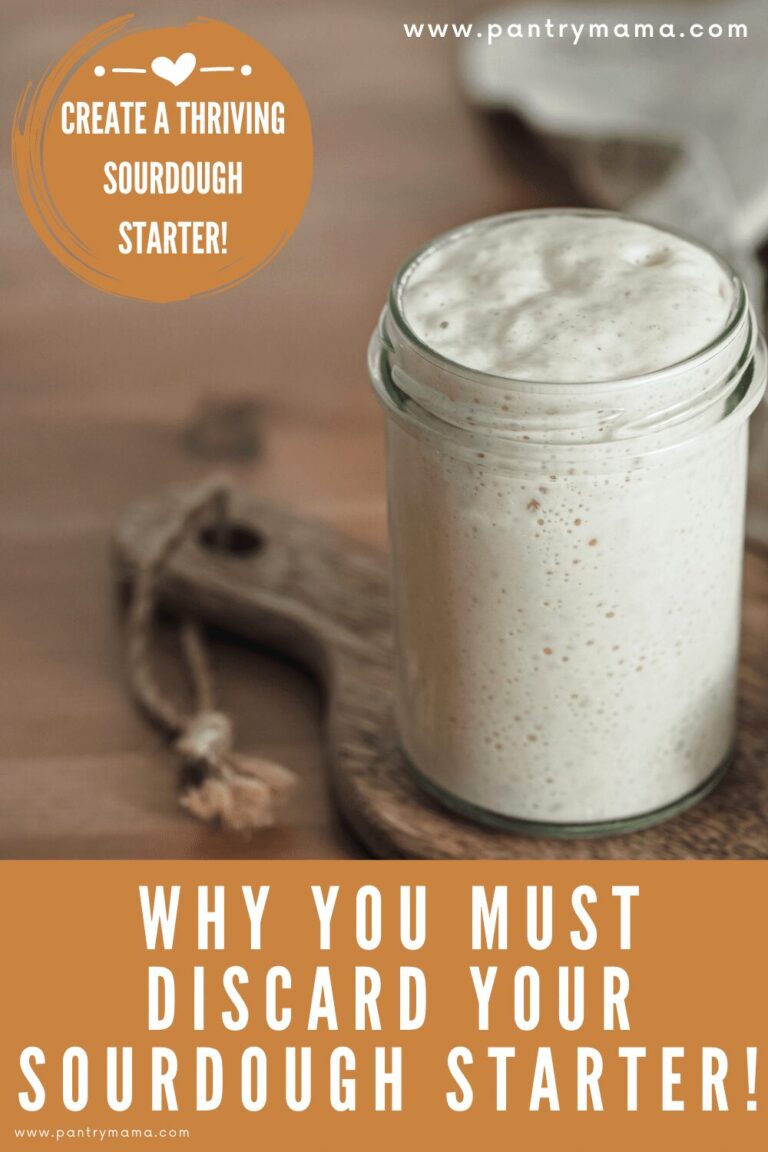
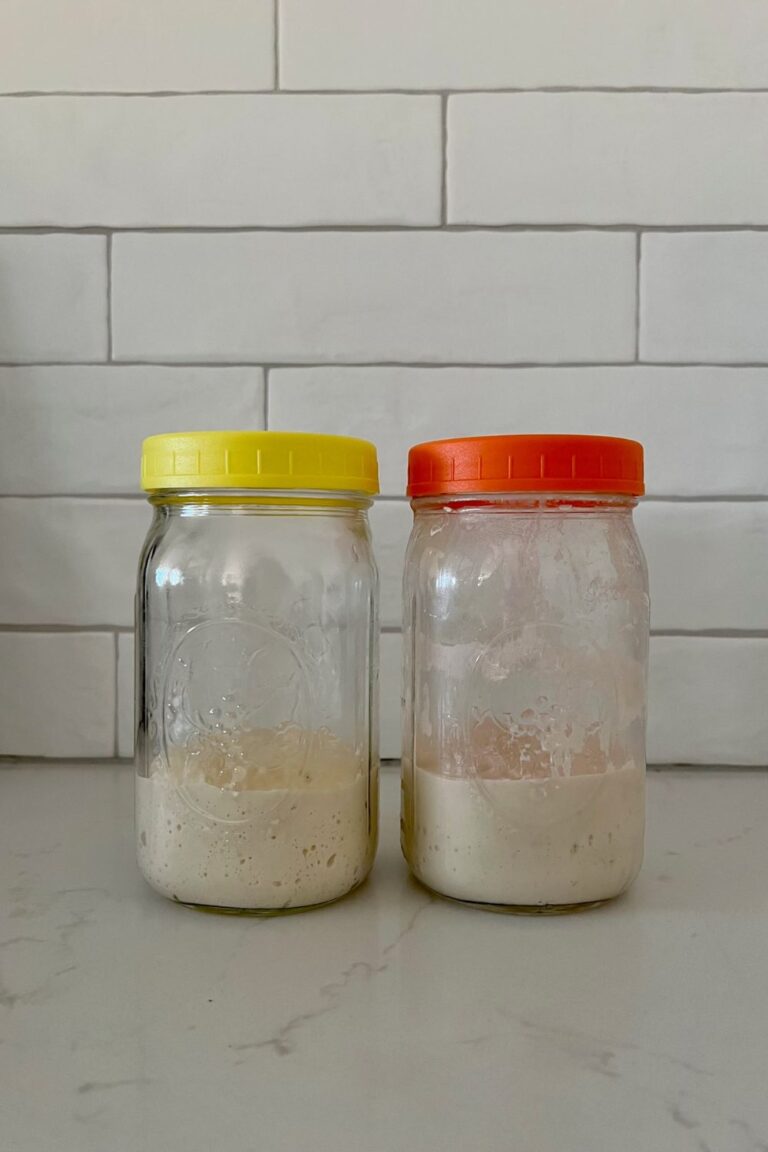
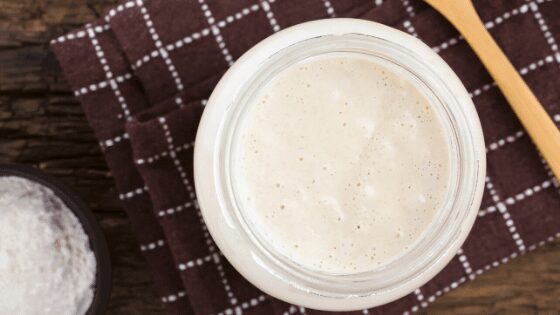
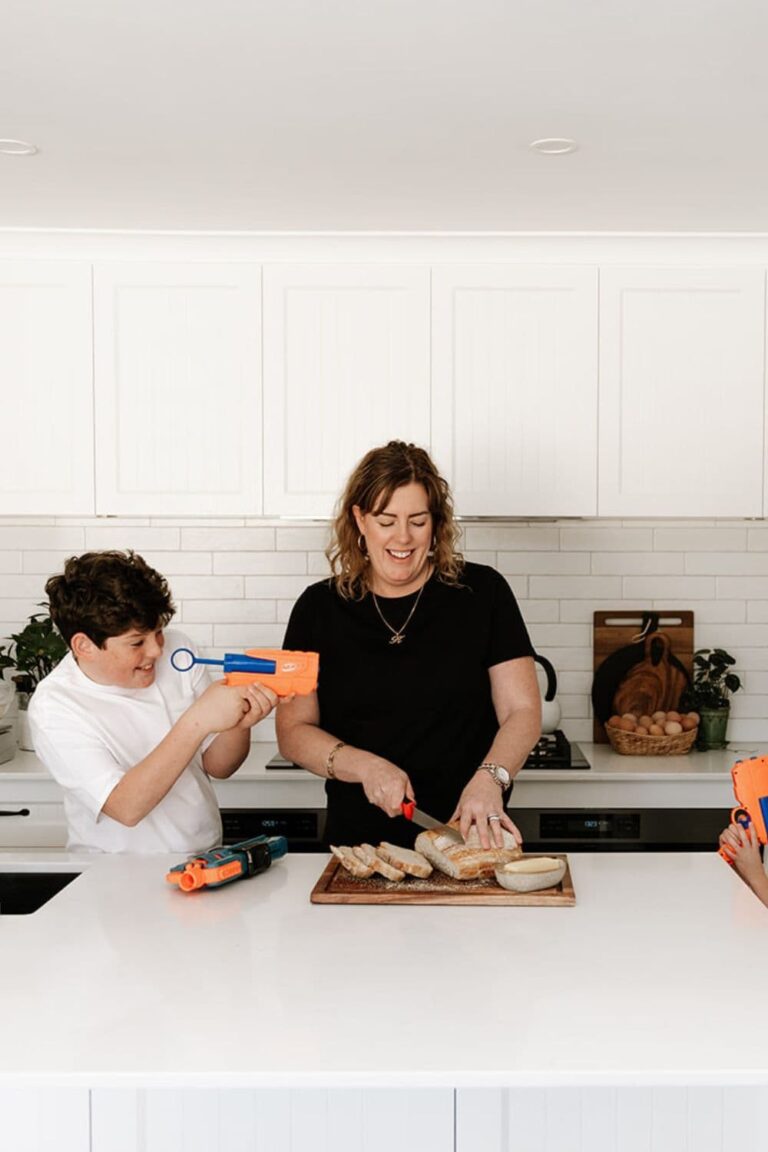
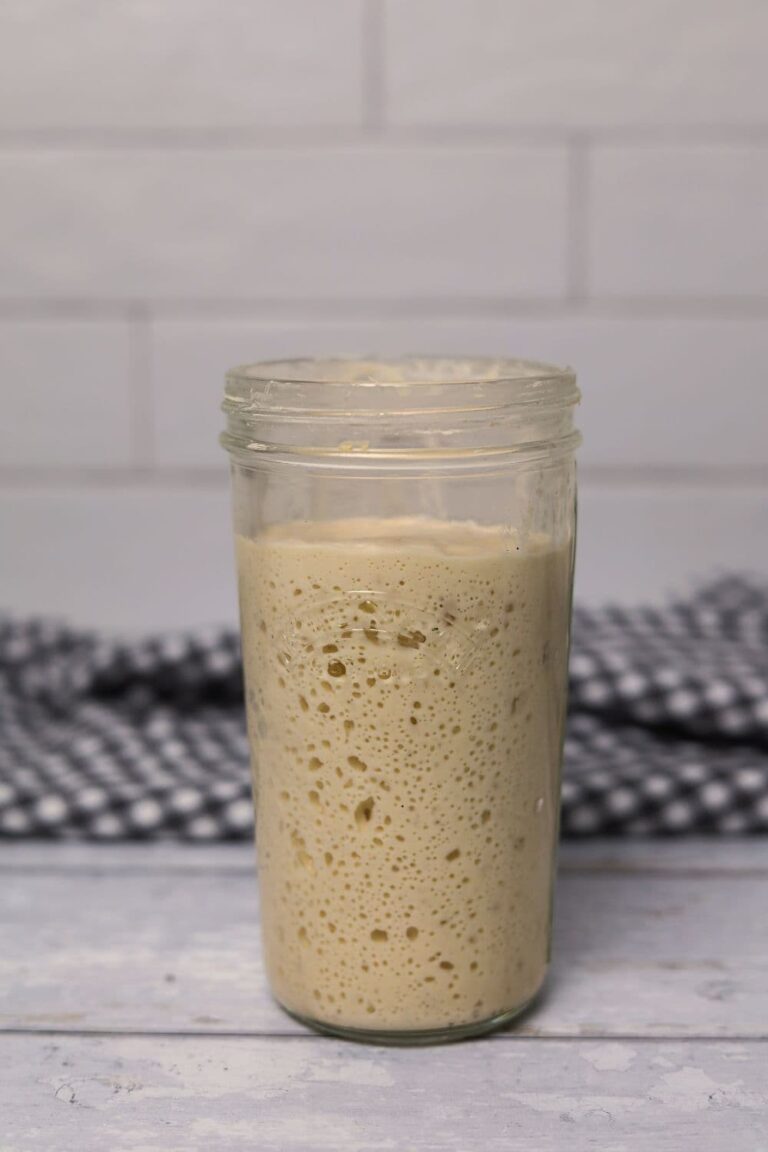

Excellent piece! Very well written, and very informative.
I have been trying to achieve a strong yeasty flavor to my buttermilk pancake recipes. However, whenever I add ADY or instant yeast to the equation, even after proofing it and allowing the starter to ferment for a few days, I get a tasty but flat pancake. I usually make a starter using ADY, flour, sugar and milk or buttermilk. Reading your article let me know, I have no idea what I'm doing. But thank you for your detailed explanations. I can now continue my quest more informed.
I would add to your list of cons for rapid commercial yeast is that most if not all store brands are GMO..